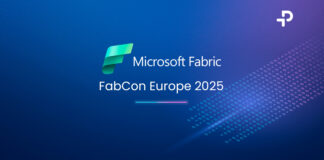Data is at the heart of every business decision today. Whether it’s predicting customer trends or optimizing operations, the quality and readiness of your data can make all the difference. That’s where ETL (Extract, Transform, Load) processes come in. With Microsoft Fabric, data preparation is not only simplified but also supercharged to ensure your data is always ready for action.
What is ETL and Why Does it Matter?
Before we get into the details, let’s quickly revisit what ETL is all about. ETL stands for Extract, Transform, Load—a process that involves extracting data from various sources, transforming it into a usable format, and loading it into a destination like a data warehouse or a database.
- Extract: Pulling data from various sources such as databases, cloud storage, and applications.
- Transform: Cleaning, enriching, and structuring the data to fit business needs.
- Load: Moving the transformed data into a target system for analysis and reporting.
ETL is crucial because it ensures your data is accurate, consistent, and ready for analysis, which in turn supports better decision-making and operational efficiency.
Why Microsoft Fabric for ETL?
Microsoft Fabric brings a host of features that streamline the ETL process, making data preparation not only easier but also more effective. Here’s how:
- Seamless Data Integration
- User-Friendly Interface
- Automated Workflows
- Scalability and Performance
- Security and Compliance
Seamless Data Integration
One of the standout features of Microsoft Fabric is its ability to seamlessly integrate with a variety of data sources. Whether your data resides in on-premises databases, cloud platforms like Azure and AWS, or applications like Salesforce and SAP, Microsoft Fabric can connect to them all. This broad compatibility ensures you can consolidate all your data into a single platform without the hassle of dealing with multiple integration tools.
User-Friendly Interface
You don’t need to be a data engineer to use Microsoft Fabric. Its intuitive, user-friendly interface makes it accessible to users of all skill levels. With drag-and-drop functionality, predefined templates, and guided workflows, setting up ETL processes becomes a breeze. This means your team can spend less time on technical setup and more time on analyzing and utilizing the data.
Automated Workflows
Manual data preparation is time-consuming and prone to errors. Microsoft Fabric automates these tasks, ensuring your data is always up-to-date and accurate. You can schedule ETL workflows to run at specific times or trigger them based on certain events. Automation not only saves time but also reduces the risk of human error, ensuring consistent data quality.
Scalability and Performance
As your business grows, so does your data. Microsoft Fabric is built to scale with your needs. It can handle large volumes of data efficiently, ensuring quick processing times regardless of the dataset size. This scalability ensures your ETL processes remain robust and reliable as your data demands increase.
Security and Compliance
Data security is a top priority for any business. Microsoft Fabric comes with built-in security features like data encryption, access controls, and compliance with industry standards. This means your data is not only handled efficiently but also protected against unauthorized access and breaches.
Practical Steps to Using Microsoft Fabric for ETL
Now that we’ve covered the benefits, let’s look at the practical steps to set up and use Microsoft Fabric for your ETL processes.
1. Connect Your Data Sources
Start by connecting Microsoft Fabric to your data sources. Use the platform’s built-in connectors to link databases, cloud storage, and applications. This step ensures all your data is accessible from a single platform.
2. Define Your ETL Workflows
Next, define your ETL workflows. Use the drag-and-drop interface to specify how data should be extracted, transformed, and loaded. You can apply various transformations such as data cleaning, normalization, and enrichment to ensure your data meets your business needs.
3. Automate and Schedule
Once your workflows are defined, automate them to run at specified intervals. Set up schedules that align with your business processes, ensuring your data is always fresh and ready for analysis.
4. Monitor and Optimize
Use Microsoft Fabric’s monitoring tools to track the performance of your ETL processes. Identify any bottlenecks or issues and optimize your workflows to ensure maximum efficiency. Regular monitoring helps maintain data quality and process reliability.
5. Analyze and Act
With your data prepared and loaded, it’s time to analyze and act. Use Microsoft Fabric’s integration with tools like Power BI to create interactive dashboards and reports. Share these insights with your team to support data-driven decision-making.
Get started: Data Preparation with Microsoft Fabric
Microsoft Fabric makes ETL processes straightforward and efficient, ensuring your data is always ready for action. By leveraging its seamless integration, user-friendly interface, automated workflows, scalability, and robust security features, you can transform your data preparation tasks from a chore into a streamlined process. Whether you’re a small business or a large enterprise, Microsoft Fabric has the tools to make your data work for you.
Ready to simplify your data preparation? Contact us to get started with Microsoft Fabric.






